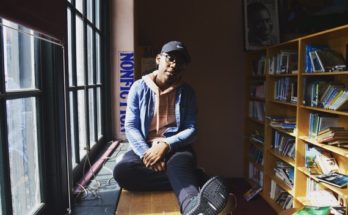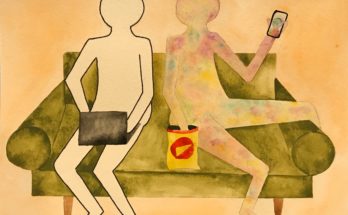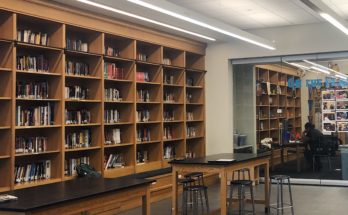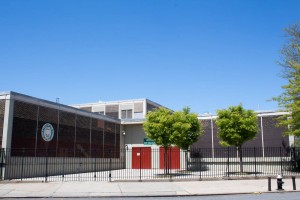
When it came time for Tonia Hucey, who lives in Boerum Hill, Brooklyn to choose a high school for her 15-year-old son, Skylar, she was nervous. She was fed up with the New York City Department of Education and how her son, who required an IEP (individualized education plan), had been treated in middle school. Hucey felt that there was a serious lack of support at all levels at the public middle school: from the support the administration gave its teachers down to the support provided to students: “My faith was gone and broken, and still is,” she said.
She concluded that her son needed a smaller school environment to succeed, additional support, and she disagreed with the public school policy banning the use of cell phones. What if her son had an emergency and had to get in touch with her? She decided to try charter schools.
Hucey had heard about the schools in the Believe High Schools Network, mainly Williamsburg Charter, from someone at her church. She put her son in the lottery and he won spots at all three schools in the network: Williamsburg Charter High School, Believe Northside Charter High School and Believe Southside Charter High School. All the charters were located in Williamsburg, but Williamsburg Charter was about to move into its own facility closer to Bushwick and further from Hucey and her son Skylar in Boerum Hill. Transportation was another big factor. She didn’t want her son to have a long commute and she wanted to make sure that the areas he was traveling through were safe ones. In the end, she decided on Believe Southside, a 20-minute subway ride away.
“I can’t say I didn’t follow him the first day,” she said laughing, mentioning that her son hadn’t known she had done that. She was still feeling uneasy about high school, largely because of the difficult experience she’d had at Skylar’s middle school. While other parents were anxiously excited at this time, Hucey remembers feeling numb.
Things seemed to be idyllic at Believe Southside. That was until March 2012, when first Skylar, then his mother, found out the school would be closing in June and that Skylar, then a sophomore, would have to spend his remaining two years of high school somewhere else.
“Honestly, I felt it wasn’t going to happen,” said Hucey. “Everybody was doing great; the teachers were wonderful,” she said. “I was like, here we go again, my son just can’t get a break.”
Skylar, along with his 200-plus schoolmates, would have to switch to alternative schools in the fall. Some students transferred out of Believe Southside immediately, as did some teachers. Skylar stayed and finished the year.
The end was a stark contrast to Skylar’s promising start at Believe Southside. At the first parent-teacher meeting, Hucey remembers teachers coming up to her, excited to meet her and telling one wonderful thing after another about her child. She was shocked, because at the public middle school, she had only received negative feedback. Skylar had been labeled a bad kid, and began to act out as such by running with the wrong crowd back then. At first she was skeptical about the shift, but soon saw the teachers’ and administrators’ enthusiasm for her son as genuine and enduring. Believe Southside had been her son’s chance to start fresh. Now though, approaching the end of his second year at the school, he was being forced to start over, again.
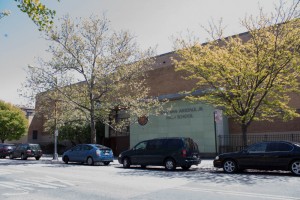
Hucey grew up in Park Slope. Her parents had come to New York City from Jamaica and she now lives in Boerum Hill and works at the New York Passport Agency. She refers to herself as a micro-managing parent. Shannon Browne, the principal of Believe Southside, remembers Hucey as a very involved parent, one who always attended Parent Association meetings at the school. Hucey’s fought a lot for her son’s education, even enrolling him in a for-credit college program at City Tech on Saturdays.
Skylar, who looks older than 17 years old, is soft-spoken, and when he does speak, flashes a charismatic grin. Principal Browne remembers him as a strong student. While quiet and withdrawn at the beginning, Browne mentioned, once he got comfortable and focused at the school, “He did great work.”
Of the school closure, “I don’t think about Southside anymore,” he said. There is “no reason to dwell on it. It closed and now I’m at a new school.” He does remember feeling upset and angry when he first heard the news, mostly because he was not able to ask questions about the closure when the students gathered for a special advisory session in March, after Principal Browne got a call from the New York State Education Department informing her that the school’s charter had been revoked and the school would close in June.
A month after that meeting, parents were brought in to go over options for alternative schools with the Department of Education. Department officials had said they would give Believe Southside parents a special list of schools with available seats. Students would have to rank their preferences and be guaranteed a seat at one. Skylar’s first choice was Williamsburg Prep, but his mom had him put Pace High School first, then Williamsburg Prep.
He ended up at Williamsburg Prep, which he says has worked out well. But when his mother recalls that meeting with the Department of Education officials, she gets visibly upset. When parents got the list of schools, there was no time to check many of them out, she recalled. Also, she mentioned that some of the schools on the list were in unsafe neighborhoods. There were some great schools on the list, but she was worried about Skylar competing with the 200-plus students at Believe Southside for seats, especially since some of the better schools had grade requirements. “They’d spent four months fretting over school closing, and grades slipped,” she said about her son and his classmates during the time between March and June. “They were set up to fail.”
Skylar also mentioned classmates becoming disinterested in school during that time: “It [Believe Southside] was closing anyway, so it didn’t matter what you do.”
Hucey and other parents tried to save the school. They held extra parent meetings to inform people about the closure and to strategize on ways to save the school. Since the parents and students were told one issue the charter had was lack of trustees on the board, one parent tried to find out what the requirements were for appointees so that the parents could pick someone. They made up and passed out fliers and sent emails – all to no avail.
Hucey still thinks those two years in a charter school were valuable for Skylar, both socially and academically. Skylar is happy to be at a public school, where the main difference he’s noticed is the size. “I like where I’m at now better,” he said. “I felt Southside was like a middle school. Now I actually feel like I’m in high school.” Believe Southside had 256 students in grades 9-12, while Williamsburg Prep has 577. And while there may be more students, the class sizes are similar to those at Believe Southside, said Skylar. He also remarked that at Williamsburg Prep, unlike Believe Southside, teachers don’t have to share classrooms.
Hucey is thankful her son’s story had a positive ending, but continues to be haunted by how things happened. She doesn’t believe that the students were a priority during the closure process and still cannot understand why the New York State Education Department couldn’t just let her son and his classmates graduate, before shuttering the school. “That,” she said, “would be you thinking about the kids first, but that’s not what life is about, which is unfortunate.”
In the few remaining weeks of the school year, Skylar was assaulted on his way home from school. A school crossing guard intervened and he was helped by police and taken to the hospital in an ambulance. The police are investigating the incident. Skylar is at home recuperating from the injuries he sustained. What move Hucey makes next is unclear. One thing is for sure, her fight to see that her son gets the best education out there continues.

